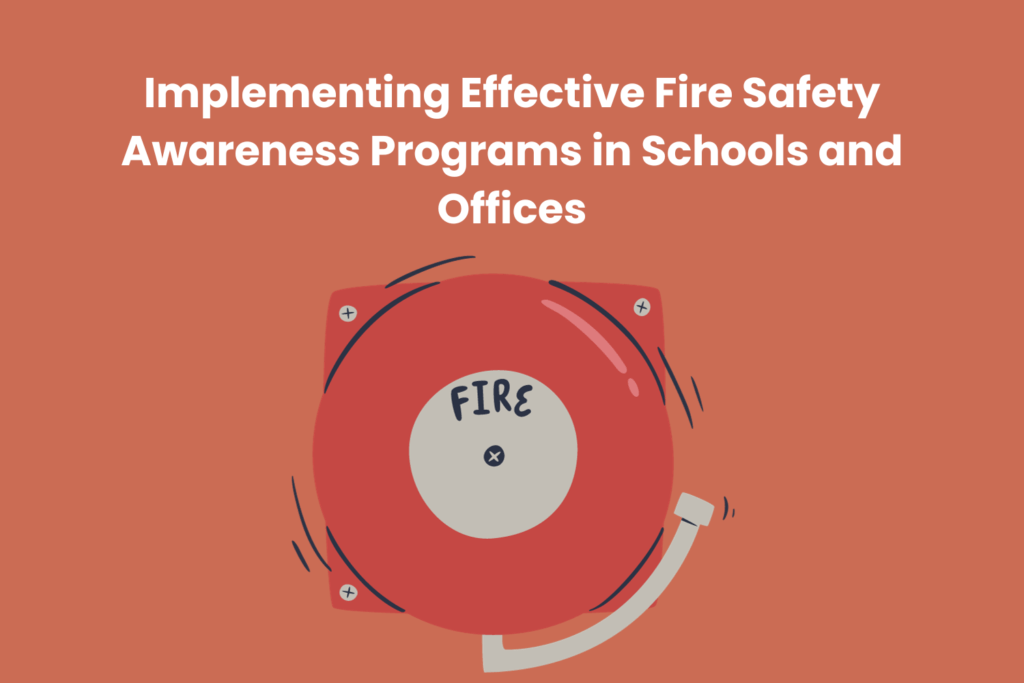School and business fire safety is of the utmost importance. It is an important part of community duty and a requirement of regulations to ensure that all residents know what to do in the event of a fire and how to escape safely. Key measures in ensuring a safe environment include implementing effective Fire Safety Awareness programmes and encouraging personnel to acquire Fire Safety Certification.
The Importance of Fire Safety Awareness
Tragic outcomes, such as deaths, serious injuries, and substantial property damage, can result from fire accidents in educational institutions and workplaces. These dangers can be significantly reduced by establishing a system where all individuals are trained in fire safety. This is where fire safety awareness programmes come in; they provide a systematic way to teach people about the dangers of fire and how to avoid them.
- Developing a Comprehensive Fire Safety Plan
An all-inclusive fire safety strategy should be developed prior to launching any fire safety awareness programme. The following elements have to be incorporated into this strategy:
Conducting a risk assessment entails looking for possible fire threats in a business or educational facility.
Risks can be reduced by preventative measures, which include things like keeping electrical systems well-maintained and storing combustible products in the right way.
Preparedness for Emergencies: Outlining specific and workable fire handling plans, including meeting places and evacuation routes.
Regular training sessions and fire drills are held to ensure everyone understands what to do in the event of a fire.
- Certification and Training Programs
An efficient strategy to improve the safety culture is to fund employee fire safety certification programmes. A certified individual can take the lead in fire safety measures and guide others. Common topics covered in these courses include fire prevention, emergency procedures, and first aid.
- Collaboration with Local Fire Departments
Any programme to raise awareness about fire safety must include partnerships with local fire departments. Firefighters are a great resource for both theoretical knowledge and hands-on experience. Expert guidance on emergency protocols, assistance with fire drills, and materials for fire safety education are all things they can give.
- Incorporating Fire Safety into the Curriculum
One novel way to start teaching kids about fire safety at an early age is to make it a part of the regular school curriculum. We may use interesting and age-appropriate activities, such as educational games and interactive workshops, to teach kids about fire safety.
- Utilising Technology for Fire Safety
Technological progress has opened up new possibilities for raising fire safety consciousness. Mobile applications that give easy access to fire safety information and advice, virtual reality simulations for emergency response training, and online training modules may be included in this.
- Regular Maintenance and Inspection
It is crucial to assess and maintain fire safety equipment, including smoke detectors, sprinkler systems, and fire extinguishers, on a regular basis. Doing so guarantees that all safety gear is operational and prepared for use in an emergency.
- Promoting a Culture of Safety
Establishing a zero-risk policy for employees and students is critical in every workplace. This necessitates training and instruction and promoting a culture in which everyone pitches in to keep buildings safe from fire. It is critical to promote open dialogue on possible dangers and ensure everyone has the confidence to take action to protect
- Evaluation and Feedback
Lastly, it is critical to regularly assess how well the fire safety awareness programme is working. Participant comments, analysis of training and drill results, and incorporation of new knowledge about fire safety measures can all help to accomplish this goal.
Conclusion
Many moving parts are involved in creating and executing a successful fire safety awareness programme at educational institutions and workplaces. Education, training, and certification in fire safety should be prioritised to make schools and offices safer for everyone. Additionally, this goal may be achieved by utilising technology and community resources. Remember that fire safety is more than simply a rule; it’s an essential part of community care and ensuring everyone in it is safe.

